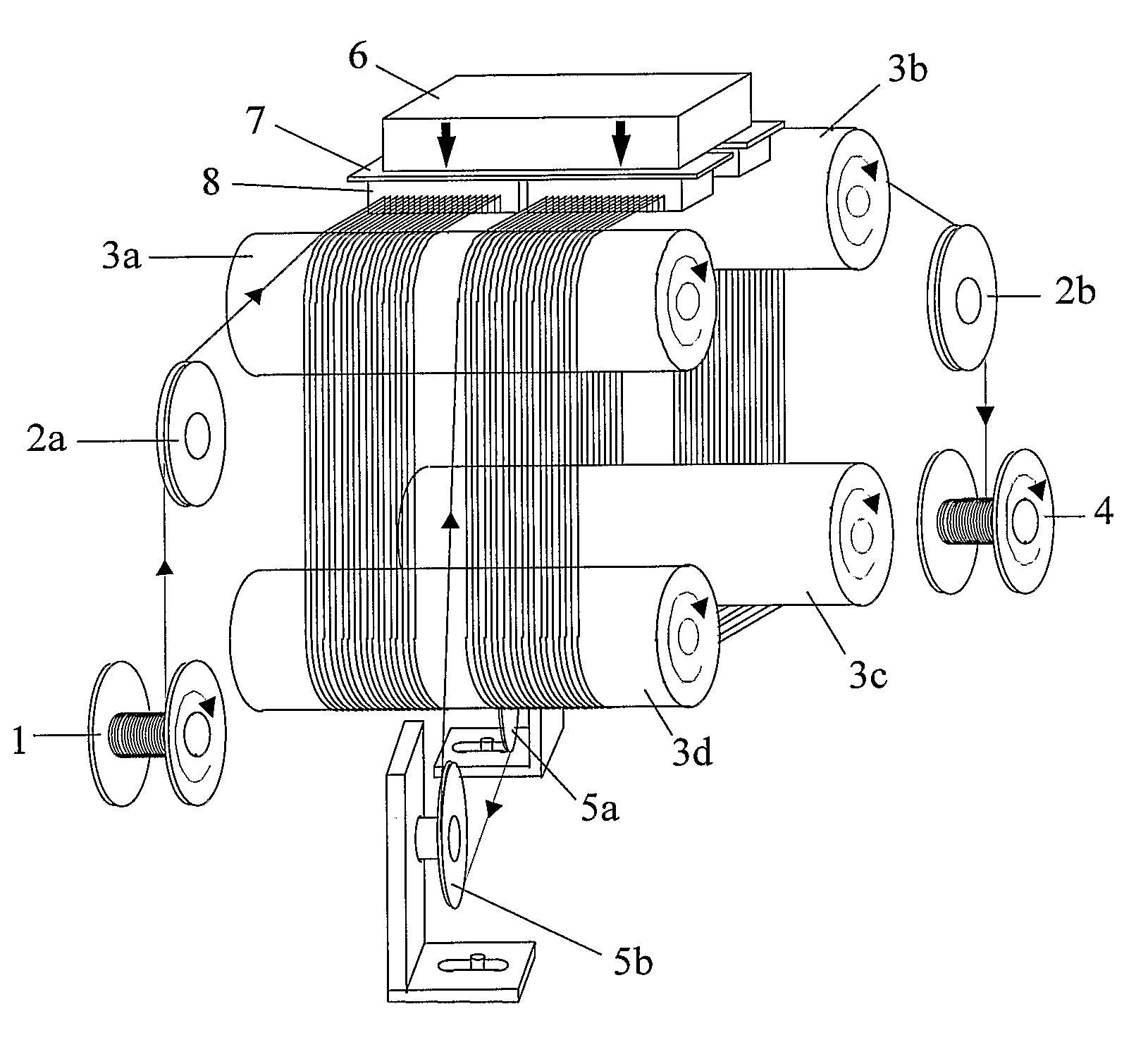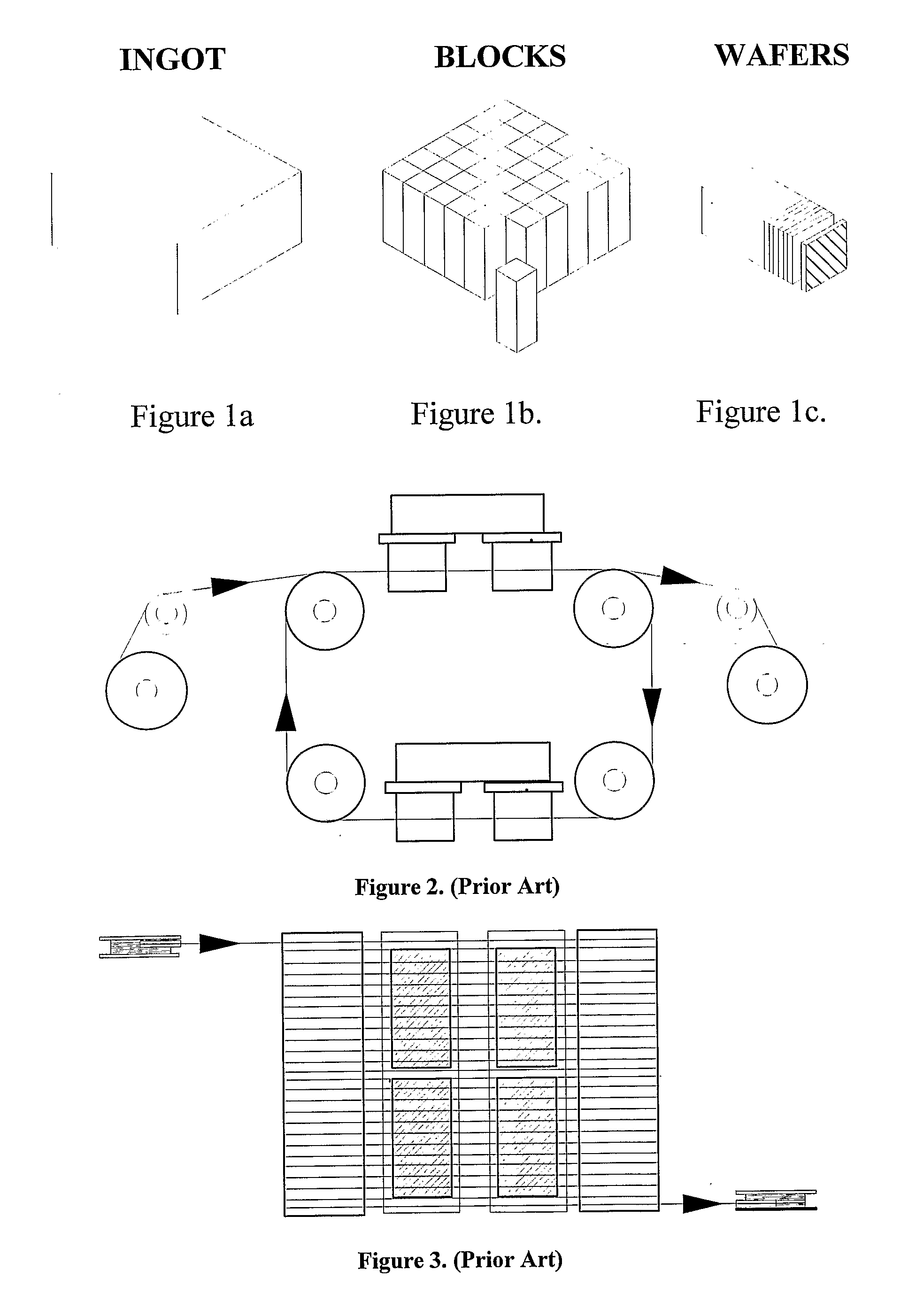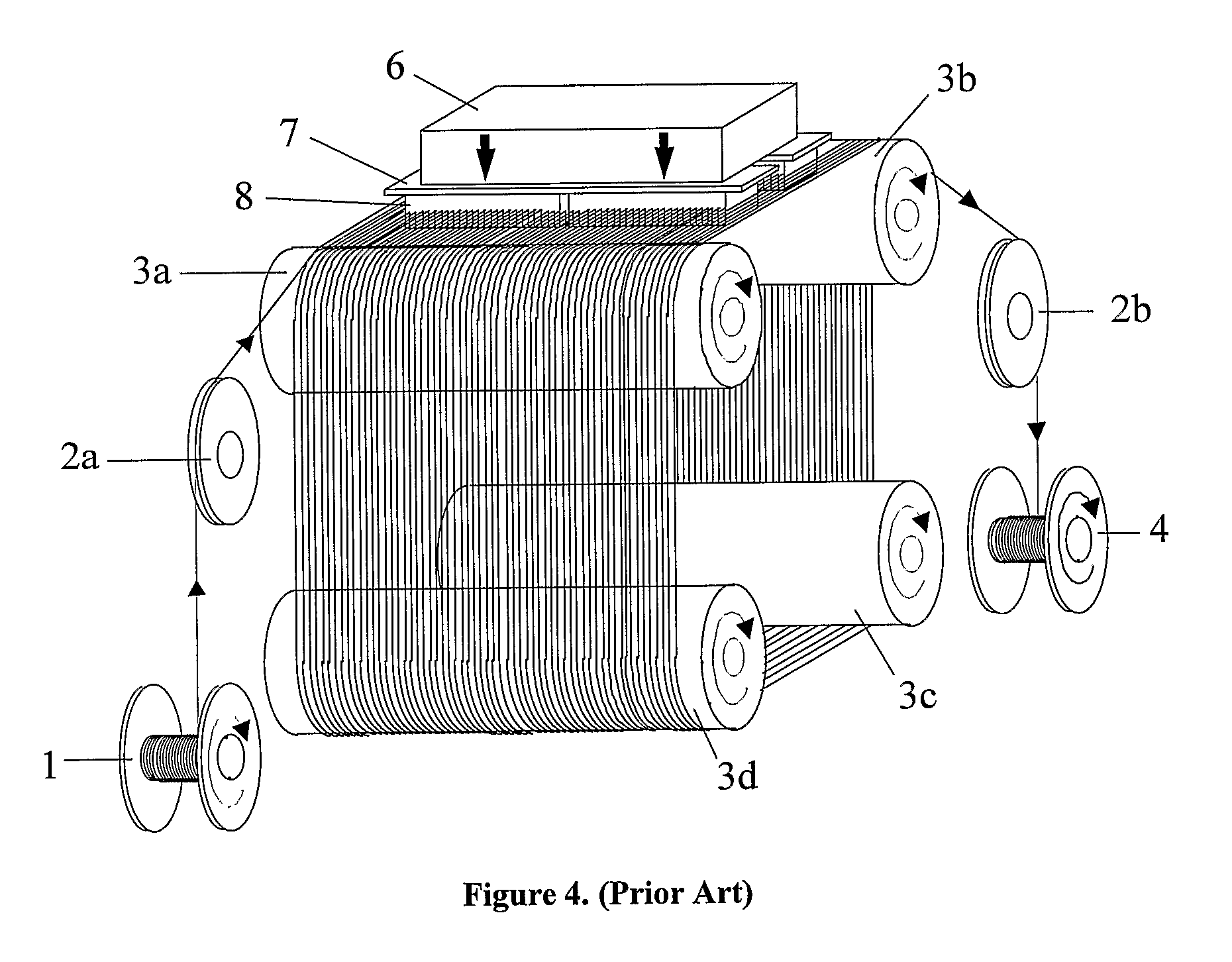Abrasive Wire Sawing
- Summary
- Abstract
- Description
- Claims
- Application Information
AI Technical Summary
Benefits of technology
Problems solved by technology
Method used
Image
Examples
Embodiment Construction
[0028] Production of thin wafers of semiconductor material is shown generally in FIG. 1. An ingot of silicon (shown in FIG. 1a) is cast in a crucible, and is allowed to cool slowly, to ensure an appropriate crystalline form. The ingot is cut by diamond saws into a series of tall blocks of uniform cross section (as shown in FIG. 1b). The blocks are then sawn into thin wafers using multibladed wire saws (as shown in FIG. 1c). The resultant wafers may be used to produce solar cells for the photovoltaic industry.
[0029] An example of a prior art wire saw is shown in FIGS. 2, 3 and 4. Four motor driven grooved roller guides are arranged in two pairs, one above the other. The two pairs are spaced vertically apart. A cutting wire is wound continuously round the roller guides at a very shallow pitch, to form a web with upper and lower cutting planes. Four blocks of silicon (e.g. four of the blocks shown in FIG. 1b) are disposed to be cut in the upper cutting plane, and four more blocks are ...
PUM
| Property | Measurement | Unit |
|---|---|---|
| Length | aaaaa | aaaaa |
| Tensile properties | aaaaa | aaaaa |
| Width | aaaaa | aaaaa |
Abstract
Description
Claims
Application Information
 Login to View More
Login to View More - R&D
- Intellectual Property
- Life Sciences
- Materials
- Tech Scout
- Unparalleled Data Quality
- Higher Quality Content
- 60% Fewer Hallucinations
Browse by: Latest US Patents, China's latest patents, Technical Efficacy Thesaurus, Application Domain, Technology Topic, Popular Technical Reports.
© 2025 PatSnap. All rights reserved.Legal|Privacy policy|Modern Slavery Act Transparency Statement|Sitemap|About US| Contact US: help@patsnap.com



